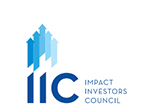|
Capital Provider Showcase
Dialogue with Shalini Chhabra and Shivank Tripathi, 3i Partners
|
|
1 Given the healthcare landscape, can you help our readers understand your investment thesis for the healthcare sector and the specific areas within the sector that you prioritise for investment?
|
Our investment thesis in the healthcare sector is centred around identifying innovative solutions that address key challenges in disease detection and healthcare delivery, focussing on accessibility & affordability to improve outcomes for underserved communities in India. We prefer investments in ideas that leverage technology to improve outcomes with observable, measurable parameters. Our specific areas of focus include Low-cost Diagnostics, Innovative Therapeutics, Healthcare Delivery & low-cost, IoT-enabled Medical Devices.
One example of our approach to healthcare investments is Hemex Health - an innovative diagnostics company providing affordable, easily transportable, immediate, low-cost diagnosis for detection of Sickle Cell (including new-born Sickle Cell) and beta-thalassemia for underserved populations globally (More than 500 million people around the globe carry the risk of inheriting haemoglobin disorders such as Sickle-cell & beta-thalassemia,). Hemex's 'Gazelle' is a platform device, eventually able to expand its range and carry out multiple tests for additional disorders and diseases such as anaemia, Malaria etc. More than 350K tests have been carried out on the devices already, and the number is set to grow manifold in the coming years.
|
2
In the post-pandemic landscape, there appears to be a decrease in funding for enterprises focused on healthcare innovation. What factors do you believe have contributed to this shift?
|
Innovative healthcare enterprises have generally found it difficult to raise funding from VCs, as the Healthcare space comes with its own set of challenges
- High Capital Requirement: Healthcare products demand extensive research and precision, leading to substantial upfront costs. Developing new drugs or diagnostic tools can cost over $1 billion, with lengthy research periods.
- Uncertain Regulatory Pathway: Less than 1% of new drug molecules tested receive regulatory approval, and evolving requirements add to the uncertainty. Even innovative detection methods face unclear regulatory paths.
- Investment Horizon Mismatch: VCs seek exits within 7-10 years, but healthcare innovation requires longer development cycles due to complexity and risk, deterring VC investment.
With a slowing of the VC investments in general, Healthcare is suffering from the double impact of the reduced capital available, and a shift to other ('lower') risk asset classes. There was a boost in VCs investing in Health post-discovery of CRISPR, and then driven by the direct impact of COVID-19 on our lives. As these factors have receded to the back of our minds, so have investments in the healthcare sector.
|
3 3i Partners has made investments across various sectors, including Agriculture, Education, Livelihoods, and Inclusion. Can you shed light on how different is investing in healthcare when compared to other sectors?
|
Investing in healthcare requires a different lens - Healthcare innovations often come from complex scientific research. The risks start with significant Science risks - rarely seen in other sectors we invest in (excluding some investments in Climate, but even they tend to be less capital intensive with higher probabilities of success). It is unique in the sense that one needs to combine a deep science understanding, with a commercial understanding of markets, products and their acceptance. Making informed decisions is incredibly difficult. There is usually no hard product to feel or see how it works, or customer validation in the early stages makes it difficult to keep abreast of new solutions evolving in the space. This contrasts with sectors like agriculture
or education, where domain knowledge is important but more intuitive to an understanding and seeing early traction can be a good guide to the problems being solved and their potential market.
|
4 Impact measurement is evolving and is always a topic of discussion, being a prominent impact investor, how do you measure the impact of your investments in the healthcare sector? It would be beneficial for our readers if you could shed light on any frameworks or metrics that you utilise to assess the outcomes generated by your investments.
|
Impact measurement is a constantly interesting but frustrating topic - how does one compare the effect of food on the poor with education, with healthcare? We constantly grapple with this and don't believe anyone has complete answers here. The UN SDG framework is a good starting point and we map all of our start-ups. We don't use a one-size-fits-all approach - and work with the start-ups we are investing in to track and measure their progress in creating an impact. Hence, for education, it might be teacher quality, learning outcomes, or resources provided. The cost of healthcare or access to it would be key parameters we try to track in the case of Health companies. For agri, it could be yield improvement, income generation etc.
|
5 What do you consider to be the primary challenges and risks when investing in the healthcare sector? Could you elaborate on the methods or strategies that you employ to mitigate these risks and ensure the long-term success of your investments?
|
The nature of the Healthcare sector lends itself to 2 types of challenges based on the kind of investment we are exploring. The first is in businesses which are creating solutions improving access for the underserved - and the key challenge has been to find a business model which can be scalable, without support from Government or CSR / grants, not just in the early stages but even over the long term. Given the inability to pay and the economic stress that the illness adds to the lower income households, it is difficult to create a viable business model. The shortage of GPs ('General Practitioners') and nurses / trained health staff adds to the difficulty. However, we believe that the twin effects of Ayushman Bharat Insurance and UHI will create a solvable framework and we are actively looking to invest in this space. The second is businesses building on the other end of the spectrum - BioTech / TechBio / Computational AI for drug discovery / IoT-enabled Medical devices etc. For these, it is always challenging for an investor to understand both the uniqueness of the discovery based on which the Founders are building, and the market size & barriers to adoption. We do try to address it somewhat, by building both internal knowledge and seeking external support but are always cognizant of the fact that there are many unknowns here.
|
6 As we look ahead, what trends and opportunities do you anticipate emerging in the healthcare sector? From an investing perspective, how do you suggest other investors approach investing in this sector?
|
The Indian healthcare industry is poised for remarkable growth, potentially surpassing half a trillion dollars this decade. Despite this, there's substantial room for improvement in health metrics compared to developed nations. We believe key opportunities lie in:
-
Increased R&D Investments: India is shifting focus from generic drug manufacturing to discovering new medicines and diagnostics, leveraging software skills for faster discoveries.
-
Digitization of Healthcare: Initiatives like Ayushman Bharat Digital Mission (ABDM) and United Health Interface (UHI) are accelerating the digitization of health records, following successful implementations of Aadhar and digital payments.
-
AI in healthcare: As India digitizes it will open the door to bringing advanced AI applications in healthcare as solutions to many problems currently plaguing the industry.
- a. Integration of AI: As India digitizes, AI can revolutionize healthcare, offering solutions to industry challenges. AI-powered healthcare assistants can expedite the adoption of Electronic Health Records (EHR) in small towns, democratizing healthcare access.
-
b. AI in Pharmaceuticals: AI promises to significantly reduce costs associated with drug discovery and development, minimizing expenses linked to failed drug candidates.
|
|
|
Shalini Chhabra, Managing Partner, 3i Partners
Shalini is Managing Partner at 3i Partners, an Impact First Fund, investing in solutions looking to solve some of the hardest problems faced in India. Previously, she has worked in Risk Management in leading Commercial & Multinational Banks in India (HDFC Bank, Citi and Kotak) and carries a deep understanding of the Indian economic landscape.
She has a Masters in Business Administration from Indian Institute of Management, Bangalore & Bachelor’s in Law from Government Law College, Mumbai.
Shivank Tripathi, Investment Professional, 3i Partners
Shivank Tripathi is an Investment Professional at 3i Partners (Impact India Investment Partners). He has experience in investment banking, private equity, and venture capital. He has completed his Bachelors of Commerce, Majoring in Finance from Delhi University, and has previously co-founded two companies.
About 3i Partners
3i Partners (Impact India Investment Partners) is a group of highly experienced US and India based technologists, ex-entrepreneurs, financial sector experts, ecosystem builders and leaders. 3i Partners began its journey in 2020 with a vision to catalyze and nurture scalable and impactful, early-stage ventures providing solutions to India's most pressing development challenges.
3i Partners invests in the domains of Agriculture, Healthcare, Education, Livelihood creation and skilling and Tech for Impact. Its philosophy is to take a "glocal" approach, through a team that adds value to their portfolio firms through their decades of collective experience in building highly successful technology ventures in the US and in the Indian corporate sector.
|
|
About Impact Investors Council:
Impact Investors Council, India (IIC) is a member-based national industry body formed with an
objective to build and strengthen the impact investing eco-system in India. To know more about our work visit https://iiic.in or reach out to secretariat@iiic.in
|
Disclaimer: Data and Information in this newsletter is made available in good faith with the exclusive intention of helping market and ecosystem players, policymakers and the public build a greater
understanding of the Indian impact investing market. The data is collated from sources believed to be reliable and accurate at the time of publication. Readers are urged to exercise independent judgment and diligence in the
usage of this information for any investment decisions
Some of the information provided in this newsletter is supplied by third parties. It is important that all users understand that third party information is not an endorsement of any nature and has been put together with the
sole purpose of benefiting stakeholders.
|
| Unsubscribe |
|
|
|


